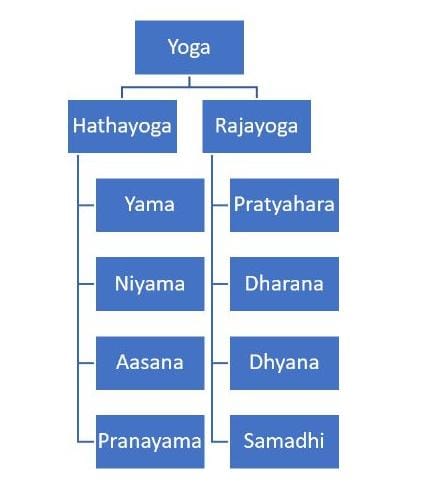Office
No 17, 3rd Cross, LB Nagar,
Kasturinagar, Bangalore 560043
Bangalore , Karnataka
India (560043)

Yoga is defined as ‘Chitta Vritti Nirodha’. The term ‘Yoga’ implies the blocking of activities of mind. Yoga implies union. Yoga can be divided into two major phases.
The first phase of Yoga is the Hathayoga that involves the process of Pranayama through Ida and Pingala which symbolizes the union of the Sun and Moon.
The second phase is Rajayoga where the union of Jivatma with Paramatma happens by Chitta Vritti Nirodha.
These two phases are further subdivided into four stages each. They are:
Hathayoga: Yama, Niyama, Aasana and Pranayama
Rajayoga: Pratyahara, Dharana, Dhyana and Samadhi
The eight limbs of yoga are the stages to attain moksha. It starts with Yama-Niyamas.
Yama and Niyama imply self-discipline and induced discipline respectively. There are ten Yamas and ten Niyamas.
Once a person becomes capable of observing both Yamas and Niyamas, he or she can start practicing Asanas to bring good control over the body that is a continuously changing matter. There are 84 important Asanas.
Once body control is achieved, Pranayama can be started to gain control over the Prana. These four stages are collectively termed as the Hathayoga.
Once the body and prana/functions are within control the person can control the mind by stepping to the mode of Rajayoga
The first stage is the Pratyahara which involves detaching the mind from all external matters and focusing inward.
The second stage Dharana involves focusing the mind to one object by concentration.
Dhyana is the penultimate stage where the person is able to maintain a calm state without any fluctuations in body and mind. After all these seven stages, the Yogi can detach from everything and unite the Jivatma to the Paramatma that is called the Samadhi.
The Samadhi can be categorized into two types:
Samprajnata Samadhi (conscious) and Asamprajnata Samadhi (super conscious).